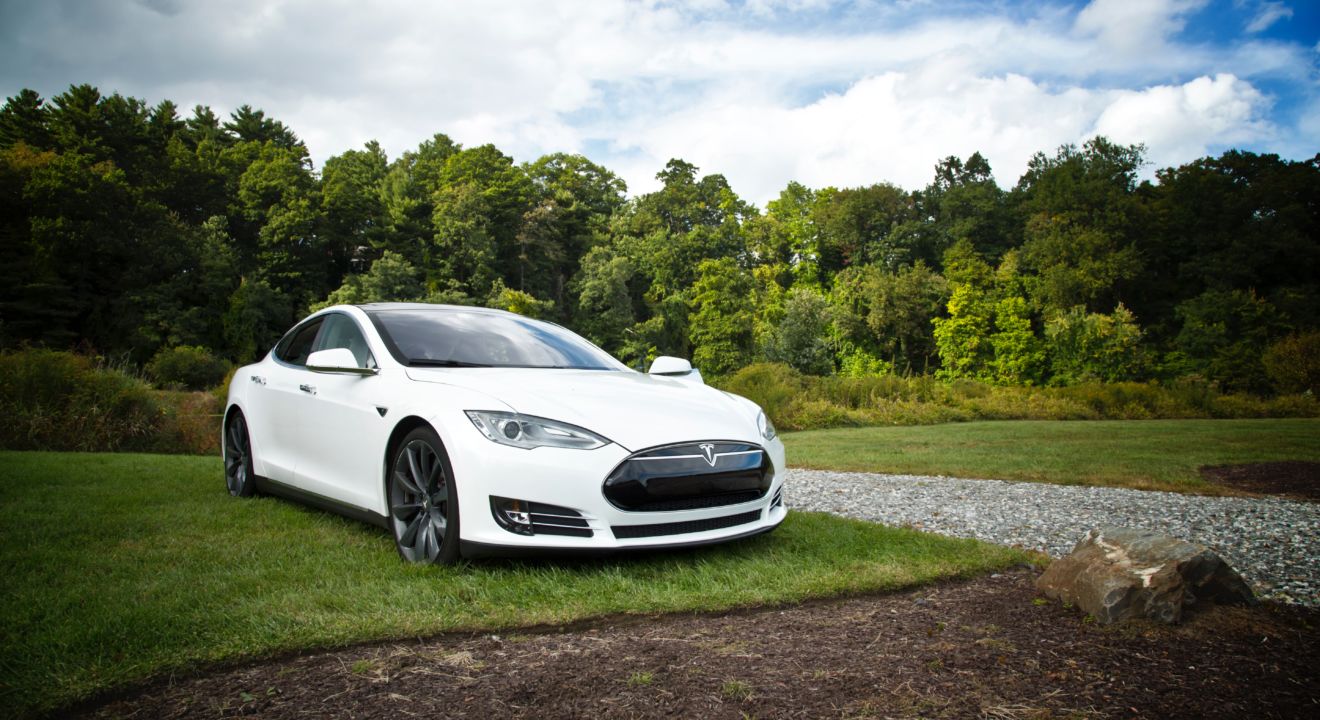Jennifer's Blog September 4, 2010


We were at a special “Bastille Day” event held by L.A.’s Petersen Automotive Museum in Malibu. Everybody dressed in white, great cars were everywhere, and Tesla was offering demo drives to this select group of automotive opinion leaders.
I had a chance to drive the fascinating Tesla Roadster this past weekend. In a word, it was, well, electrifying. The power and performance of a Lotus Exige, without the noise and pollution. More on this in a moment.
We were at a special “Bastille Day” event held by L.A.’s Petersen Automotive Museum in Malibu. Everybody dressed in white, great cars were everywhere, and Tesla was offering demo drives to this select group of automotive opinion leaders. In case you’ve not heard of Tesla, it is a Bay Area startup run by CEO Elon Musk, who made a couple hundred million by selling his previous Big Idea, PayPal. Tesla plans to build an electric car that will be affordable, but the initial product really is not. It sells for about $125K, plus extras such as the deluxe charging station, sport package upgrade, etc.
Let’s evaluate the car first, not the price. It is based on the Lotus Esprit chassis, or platform as the car industry calls it. I have always loved the Lotus and confess to taking a special Lotus driving school in my previous life. As fast cars go, it is very lightweight, gets close to 30 mpg, corners like a mother, runs zero to 60 in less than five seconds and does this running a four cylinder Toyota engine. It is also very hard to get in and out of, has little storage space, poor visibility and is not very practical as a daily driver.
The Tesla is thus based on the Lotus, and looks are rather similar — at a glance it’s tough to tell them apart. Upon further inspection, the different wheels and trim do give the Tesla a different look. Tesla claims zero to 60 in less than four seconds, and while I didn’t test it with instruments, it did seem possible. All you do is turn the key, punch a round button on the center console to choose “P” or “R” or “D” and off you go. No shifting, it is a direct drive transmission, just stab and steer, so to speak.
This thing really lights it up from low speed. A strong, firm push in your lower back, a shrill but jet-like whistling sound, and you are doing over 60, just like that. No traction problems, either, Tesla puts the power down. Despite lots of carbon fiber and other lightweight materials, you can feel the difference in weight as opposed to the Lotus. Indeed, Tesla may look very similar but achieves speed and efficiency with a heavy battery pack, mounted behind the passenger compartment. This is reflected in the steering, which can feel rather heavy in certain maneuvers.
Handling felt good on Highway One and nearby twisties, but the road was very smooth so we couldn’t really say how it does on rough pavement. Tesla claims a range of nearly 250 miles, but this can be as much as 75-100 miles less if you are climbing hills in hot weather, and/or if you are hammering the throttle — which is kind of addictive especially with zero noise or pollution.
In case you can’t tell, I loved the Tesla driving experience, and the idea of literally plugging it into the wall when returning to your garage and NEVER visiting a gas station, ever. That said, it is on some level more of a novelty than a green solution. At it’s price point, Tesla is more a rich man’s toy than everyman’s solution to fossil fuels and global warming. The price point makes it cost prohibitive to the general public, which financial access to these types of vehicles is an absolute priority if we are really going to reduce global carbon emissions.
Yes, I know that Tesla, and its competitor Fisker, are planning to sell mid-sized family sedans priced at less than $45,000 by 2012. Interestingly enough, the US government loaned $500 million of our tax dollars to Tesla in which they cannot draw on this money until AFTER they have built their factory with private funds to produce their 4-door Model S. Tesla Roadsters (and future Sedans) already come with $7500 tax credits, as do all pure electric cars. Why not just incentivize the consumer instead? Anybody who buys an electric car gets an immediate $5,000 rebate or perhaps a 30% federal tax credit similar to how the government incentivizes solar could apply to electric cars. Seems like a better way to encourage us to drive electric vehicles, no?
Nissan will be bringing the new Leaf, a full electric, next year, as well as GM coming with its Volt. Toyota is also planning a fully electric Prius. And Chinese maker BYD is also threatening to bring an electric model to U.S. shores. Bring them on, the more the merrier. I only hope they can be sold at prices low enough to touch middle America and get some volume — and thus measurable energy and environmental benefits — into the electric car segment.
It will be intriguing to see how this shakes out. In the meantime, if you can afford it, buy a Tesla you will not be disappointed. As always, thanks for reading, and we love to read your comments.